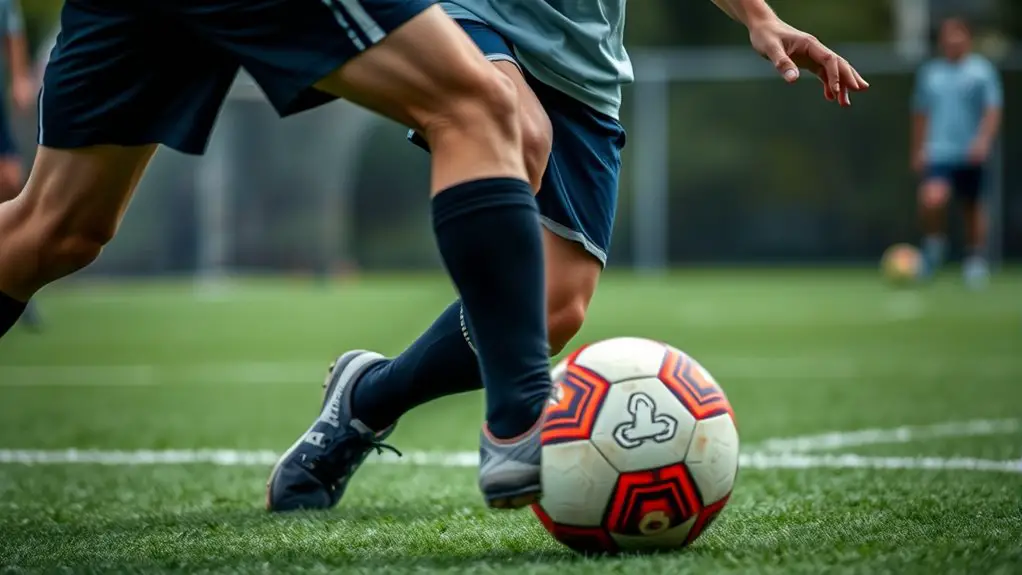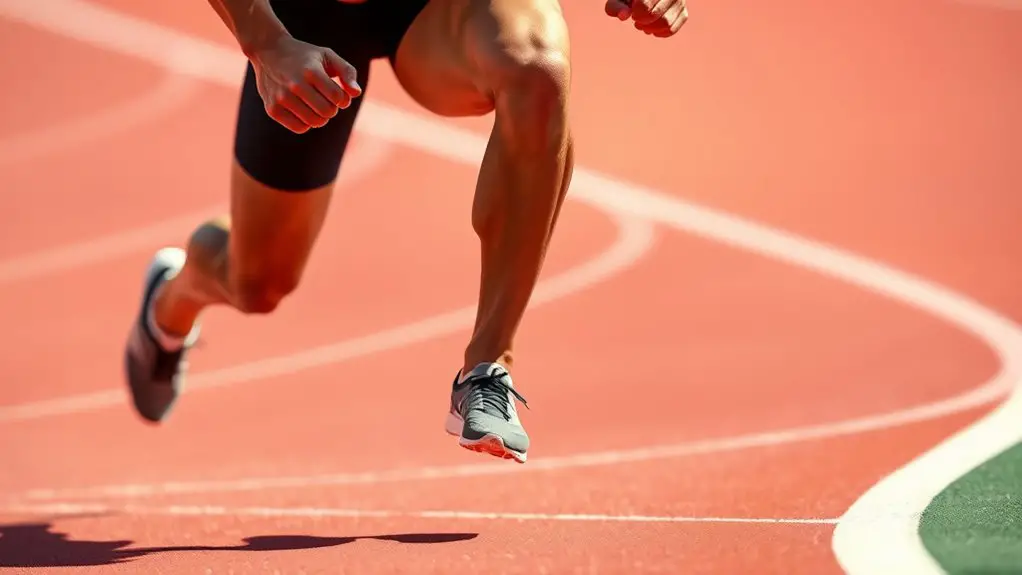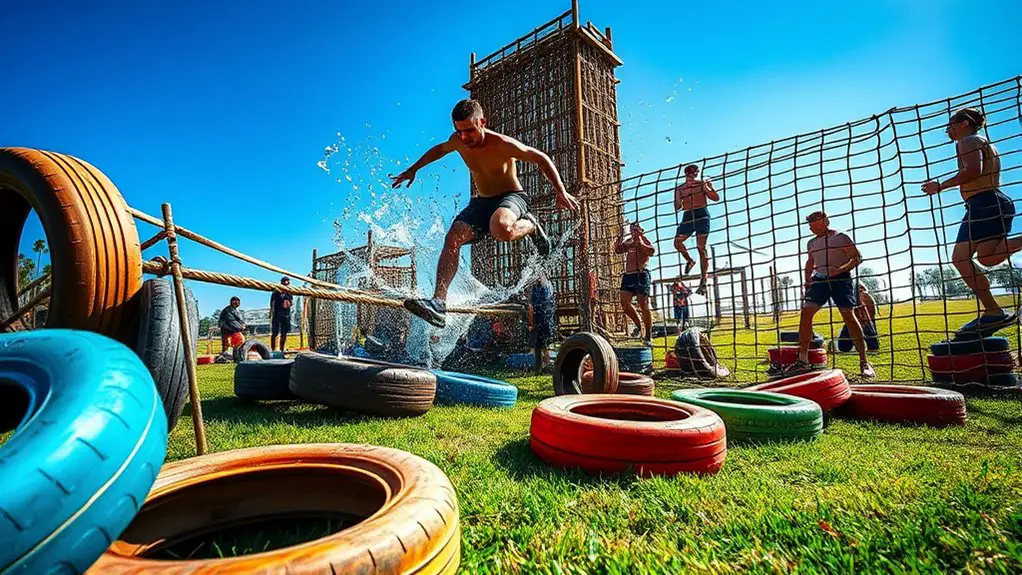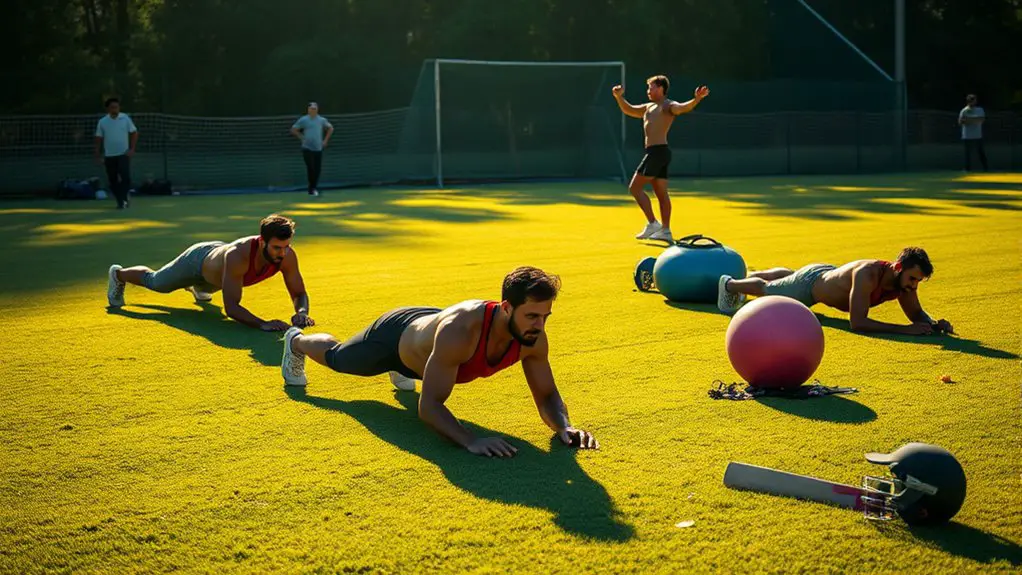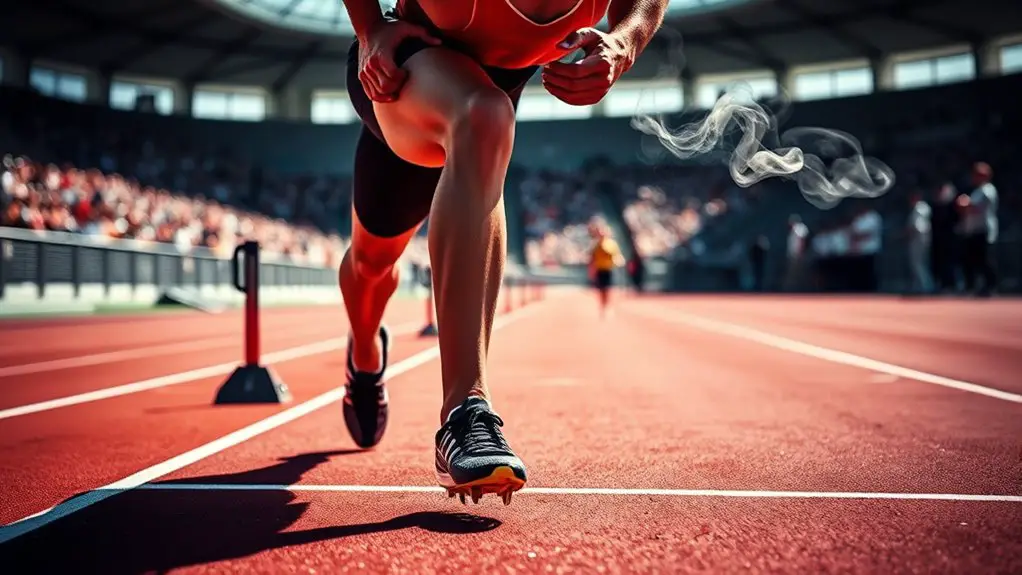To improve ball control under pressure, focus on developing your ball manipulation and touch sensitivity. Practice drills like toe-touches and tight-space dribbling, and incorporate partner drills that simulate game situations. Employ techniques such as feints and sudden direction changes to navigate past defenders. Stay relaxed, breathe deeply, and visualize scenarios to enhance your mental composure. By sharpening your decision-making and awareness in tight situations, you'll elevate your overall performance. There's much more to explore, so keep going!
Understanding Ball Control in Soccer
When you think about soccer, ball control is one of the most essential skills to master, especially under pressure. To truly excel, you need to develop your ball manipulation and touch sensitivity. This means learning how to handle the ball with finesse, whether you're receiving a pass or dribbling past defenders.
Focus on keeping your body relaxed and your feet light. The more you practice, the better you'll become at gauging the right amount of pressure to apply. Use different parts of your foot to control the ball, and don't shy away from experimenting with various techniques. As you enhance your ball control, you'll find that it grants you the freedom to express yourself on the field. You'll be able to navigate tight spaces and make quick decisions, elevating your game. Additionally, incorporating agility training techniques into your routine will further improve your overall performance. Remember, mastery takes time, but the rewards are worth the journey.
The Importance of Composure Under Pressure
When you're under pressure, staying composed can make all the difference in your performance. By using mental focus techniques and breathing exercises, you can enhance your ability to manage stress on the field. Let's explore how these strategies can help you maintain control when it matters most. Additionally, incorporating mindfulness techniques into your practice can significantly improve your focus and composure during high-pressure situations.
Mental Focus Techniques
In high-pressure situations, it's crucial to maintain mental clarity and composure. You can achieve this through visualization techniques and mindfulness practices. Picture yourself effortlessly maneuvering the ball, surrounded by defenders, and successfully executing your moves. This mental imagery can boost your confidence and focus, making it easier to perform under stress.
Mindfulness practices, like staying present and aware of your thoughts, help you recognize when anxiety creeps in. Acknowledge it, then gently steer your focus back to the task at hand. By combining these techniques, you'll cultivate a sense of freedom, allowing your instincts to guide you. Remember, it's all about trusting yourself and your training, letting go of the pressure, and enjoying the game.
Breathing Exercises Benefits
Maintaining composure under pressure is a skill that can be enhanced through effective breathing exercises. By practicing specific breathing techniques, you can train your body to respond calmly in high-stress situations. These techniques help slow your heart rate and center your thoughts, which is crucial when you're feeling overwhelmed. You'll find that regular practice leads to significant anxiety reduction, allowing you to focus on your performance rather than the pressure around you. Incorporating deep, rhythmic breaths can ground you, granting you the freedom to play with confidence. Remember, when you control your breath, you control your mind, enabling you to execute your skills with precision even in the most challenging moments. Embrace these exercises, and watch your composure flourish.
Essential Drills for Enhancing Ball Control
To enhance your ball control under pressure, incorporating specific drills into your training routine is essential. Start with simple ball handling drills, like toe-touches and inside-out touches, to get comfortable with the ball at your feet. Next, practice dribbling techniques in tight spaces—use cones or markers to set up an obstacle course. Focus on quick, controlled touches to improve your agility and precision.
Introduce partner drills where you pass the ball back and forth under pressure, gradually increasing the speed and intensity. This simulates real-game scenarios and enhances your ability to maintain control when it counts. Additionally, consistent training is crucial for improving your footwork, which can ultimately elevate your ball control skills.
Lastly, consider using a wall for rebound drills; it's a great way to work on your first touch and reaction time. Remember, consistency is key. Regularly incorporating these drills will boost your confidence and ball control, making you a more effective player on the field.
Techniques for Dribbling Past Defenders
While facing a defender, using effective dribbling techniques can make all the difference in breaking through their defenses. Start by observing their body positioning and footwork. Quick, agile movements can throw off their anticipation. Use feints and sudden changes of direction to create space. The key is to keep the defender guessing; if they can predict your next move, you'll struggle to get past.
Incorporate techniques like the step-over or the nutmeg to catch them off guard. When you see an opening, don't hesitate—accelerate into it. Remember, it's not just about speed; it's about control. Keep the ball close and use both feet to maintain versatility. Regularly practicing agility drills can significantly enhance your ability to maneuver effectively around defenders.
Ultimately, the more you practice these dribbling techniques, the better you'll become at reading defenders. Freedom on the pitch comes from confidence in your ability to outmaneuver anyone standing in your way.
Practicing Quick Decision-Making
In the heat of the game, making quick decisions can mean the difference between maintaining possession and losing the ball. To sharpen your skills, create a variety of decision-making scenarios during practice. Set up drills that mimic game situations, forcing you to choose between passing, shooting, or dribbling under pressure. This not only hones your ball control but also enhances your cognitive processing.
Consider using a stopwatch to add urgency, challenging yourself to make choices faster. You could also practice with teammates, who can act as defenders, pushing you to think on your feet. The more you expose yourself to these scenarios, the more instinctive your decision-making will become. Remember, it's all about finding that rhythm between your mind and body. By embracing the challenge, you'll gain the freedom to express your style of play while confidently maneuvering high-pressure situations. Additionally, incorporating reaction time training techniques into your practice can further boost your ability to respond swiftly and effectively.
Utilizing Body Positioning and Weight Distribution
To maintain control under pressure, your body positioning and weight distribution are essential. You need to keep a proper stance alignment to react quickly, while shifting your weight effectively allows you to maneuver the ball with precision. Let's explore how mastering these techniques can elevate your game.
Proper Stance Alignment
Achieving proper stance alignment is essential for maintaining control under pressure, as it directly influences your ability to respond effectively to opponents. When you're positioned correctly, you'll enjoy greater stance stability, allowing you to pivot and move fluidly. Start by ensuring your feet are shoulder-width apart, with your knees slightly bent. This foundation lets you make quick alignment adjustments when the play changes. Keep your body balanced, distributing your weight evenly, so you can shift quickly if needed. Remember, a solid stance not only helps you maintain control over the ball but also empowers you to take risks and express your style on the field. Embrace this freedom, and watch your confidence grow as you navigate high-pressure situations.
Shift Weight Effectively
Mastering the art of weight shifting is essential for maintaining control while facing pressure on the field. By effectively using weight transfer techniques, you can enhance your agility and responsiveness. Start by bending your knees slightly and positioning your body over the ball, allowing for quick movements in any direction. Focus on distributing your weight between your feet to keep your balance intact. As you receive the ball, shift your weight forward to engage your momentum; this keeps defenders guessing. Practicing balance improvement strategies, like one-legged drills, can also help you stay grounded under pressure. Remember, it's all about fluidity—stay relaxed and trust your instincts to maneuver freely, turning pressure into opportunity.
Incorporating Small-Sided Games Into Training
While traditional drills have their place, incorporating small-sided games into training can greatly enhance players' ball control under pressure. These dynamic situations mimic real match conditions, allowing you to practice small-sided tactics that promote quick decision-making and heightened awareness. You'll find that game variations, like 3v3 or 4v4 setups, create an engaging environment where players must adapt and respond rapidly. Additionally, incorporating agility ladder drills into your training regimen can further improve foot speed and coordination, essential skills for maintaining ball control in high-pressure scenarios.
Analyzing Professional Players' Ball Control Skills
When you analyze professional players' ball control skills, it's clear that their ability to maintain composure under pressure sets them apart. These athletes utilize professional techniques that allow them to navigate tight spaces, respond quickly, and execute precise movements. Take a moment to observe how they read the game; their vision and anticipation enable them to stay one step ahead, even when defenders are closing in.
Player comparisons reveal fascinating insights. For instance, consider how a player like Lionel Messi weaves through defenders with fluidity while others rely on brute strength. Each player has their unique style, but they all share the fundamental skill of ball control under pressure. By studying these professionals, you can adopt elements of their techniques into your own game. Embrace the freedom to experiment with your style while focusing on developing that essential composure that'll elevate your performance on the field. Additionally, understanding mental toughness can significantly enhance your ability to perform under pressure and navigate challenging situations effectively.
Frequently Asked Questions
How Can I Assess My Current Ball Control Skills?
To assess your current ball control skills, start by using self-evaluation techniques. Record yourself while dribbling, passing, or juggling the ball, then analyze your movements. You can also try skill assessment methods like setting up obstacles and timing how well you navigate them. Invite a friend to provide feedback or participate in drills that challenge your control. Embrace the process, and you'll discover areas for improvement while enjoying your freedom on the field.
What Mental Techniques Help Maintain Composure During Pressure Situations?
When you're in a pressure cooker, staying cool is key. Visualization techniques can be your secret weapon; picture yourself performing flawlessly under stress. Pair that with mindfulness practices to ground yourself, keeping distractions at bay. Focus on your breath and the rhythm of your movements, like a dancer in perfect harmony. These tools help you embrace the moment, turning pressure into an opportunity for freedom and expression on the field.
How Often Should I Practice Ball Control Drills?
You should aim to practice ball control drills at least three times a week. Keeping a consistent drill frequency helps you build muscle memory and confidence. Each session doesn't have to be long; 20 to 30 minutes can be enough to make noticeable improvements. Remember, the key is to enjoy the process and let your skills develop naturally. Listen to your body and adjust practice duration as needed for maximum growth and freedom on the field.
Are There Specific Exercises for Improving Foot Speed?
If you're looking to boost your foot speed, incorporating ladder drills and cone sprints into your routine can make a big difference. Ladder drills help improve agility and coordination, while cone sprints enhance your acceleration and quickness. Set up a ladder and practice various footwork patterns. For cone sprints, arrange cones in different formations and sprint between them. You'll feel your speed and overall game improve, giving you that freedom on the field you crave!
Can Nutrition Impact My Ball Control Performance?
"You are what you eat," and that rings true for ball control! Your nutrition timing and hydration strategies can greatly impact your performance. Fueling your body with the right nutrients before and after training helps maintain energy levels and aids recovery. Staying hydrated not only keeps you focused but also improves muscle function, which is essential when you're under pressure. So, take charge of your diet to enhance your game and release your potential!
